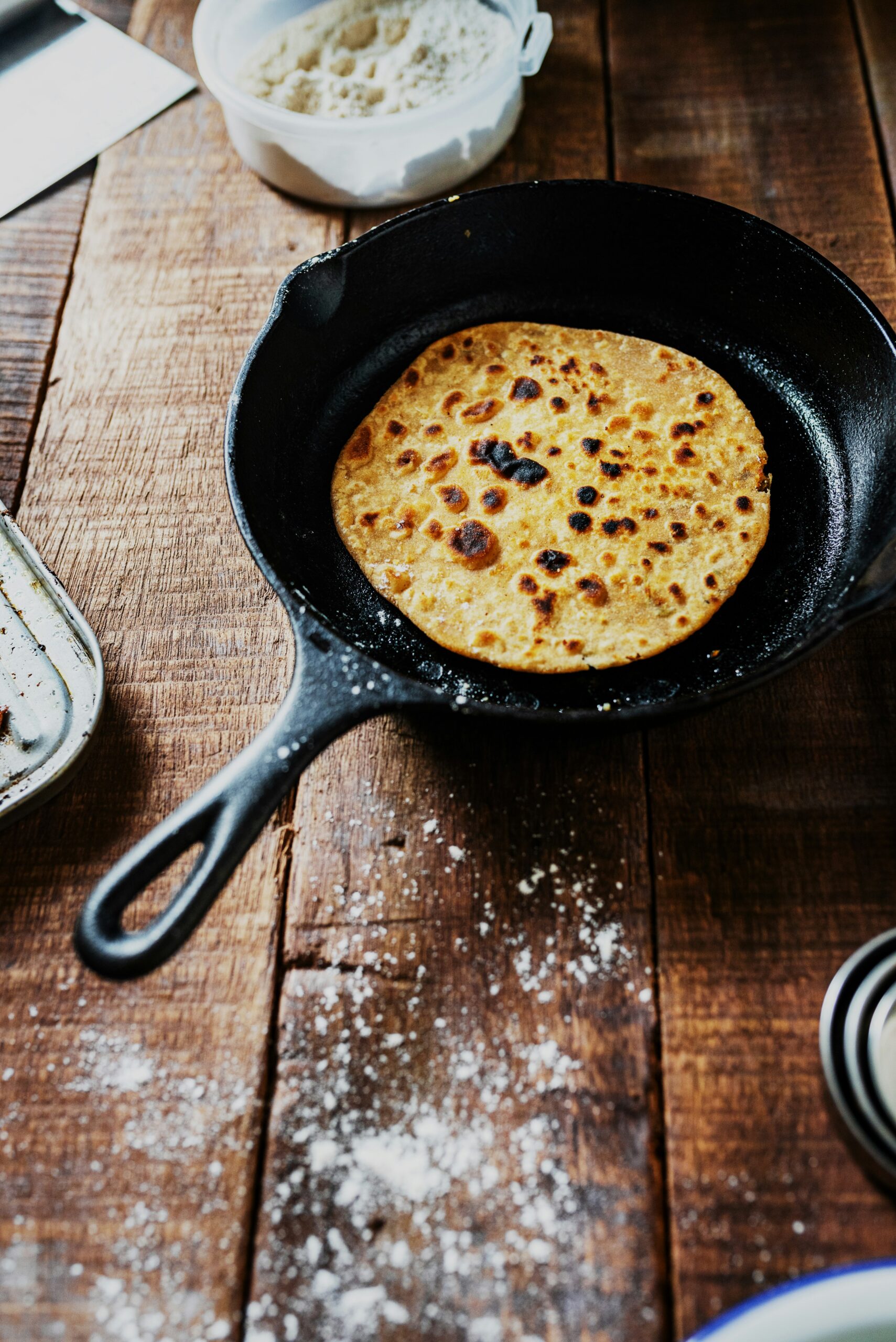
Welcome to my kitchen! Today we’re diving into the world of cast iron cookware. In this post, we will be focusing on the star of the show: the cast-iron skillet. Revered for its versatility and durability, a well-maintained skillet can be your kitchen’s best friend. But, how do you keep this culinary champion in tip-top shape? Let’s unravel the mystery of how to clean cast iron skillets effectively.
Understanding Your Cast Iron Skillet
Before we jump into cleaning, it’s crucial to understand what makes cast iron cookware so special. Cast iron is known for its excellent heat retention and ability to be used at high temperatures. When properly seasoned, cast iron develops a natural nonstick surface, perfect for cooking a variety of foods. However, this seasoning can be damaged if the skillet is not cared for properly.
Looking to purchase a new cast iron skillet? Check out this review of the 5 Best Cast Iron Skillets by Food Network!

How to Clean a Cast Iron Pan
- Remove Food and Grease: After cooking, while the skillet is still warm, use a paper towel to wipe away any excess food or grease. This is an essential first step in cleaning your skillet.
- Rinse with Warm Water: Rinse your skillet with warm water. It’s a common myth and popular belief that you should never use water on cast iron, but a quick rinse with hot water won’t harm your pan. Avoid soaking it, though, as this can lead to rust.
- Use Mild Dish Soap (Optional): For a deeper clean, it’s okay to use a little soap. Purists might view this as a no-no, but a small amount of soap won’t strip the seasoning, especially on well-seasoned cast iron.
- Scrub Away Stubborn Stuck-On Bits: If you have stuck-on food bits or burnt food residue, use a non-metal brush or stiff brush for rusty cast iron. Never use metal scouring pads. Be gentle to avoid damaging the seasoned surface.
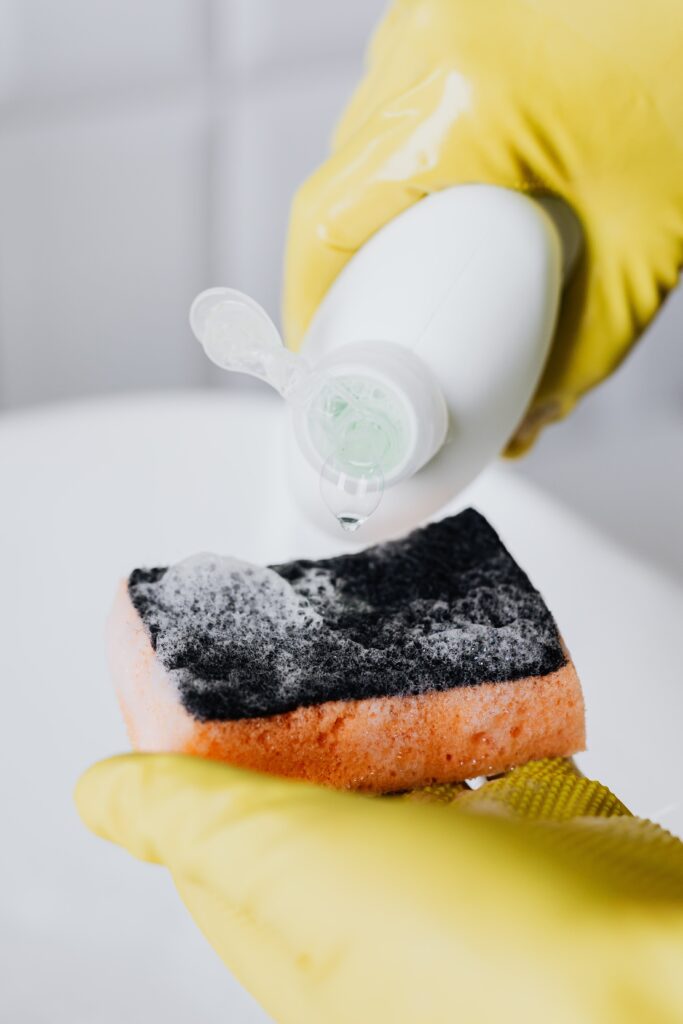
How to Dry a Cast Iron Pan
- Dry Thoroughly: This step is vital. Use a towel to dry your skillet immediately after washing. Iron cookware is prone to rust, so never leave it wet. Wipe with clean paper towel, a dish towel or lint-free cloth.
- Heat it on the Stove: To ensure it’s completely dry, place the iron pan on the stove over low heat for a few minutes. This step also opens up the pores of the iron, preparing it for re-seasoning.
Use Salt to Clean Cast Iron for Stubborn Stuckon Foods
Cleaning your cast iron skillet with salt is beneficial because salt acts as a natural abrasive, effectively scrubbing away food residues and grease without damaging the pan’s seasoned coating. This method is especially useful for removing stubborn, stuck-on food without the need for harsh detergents.
Additionally, coaese kosher salt helps to absorb excess moisture, reducing the risk of rust, which is crucial for maintaining the longevity and performance of your cast iron cookware. This simple, non-toxic cleaning technique is quick, efficient, and helps preserve the skillet’s non-stick surface.
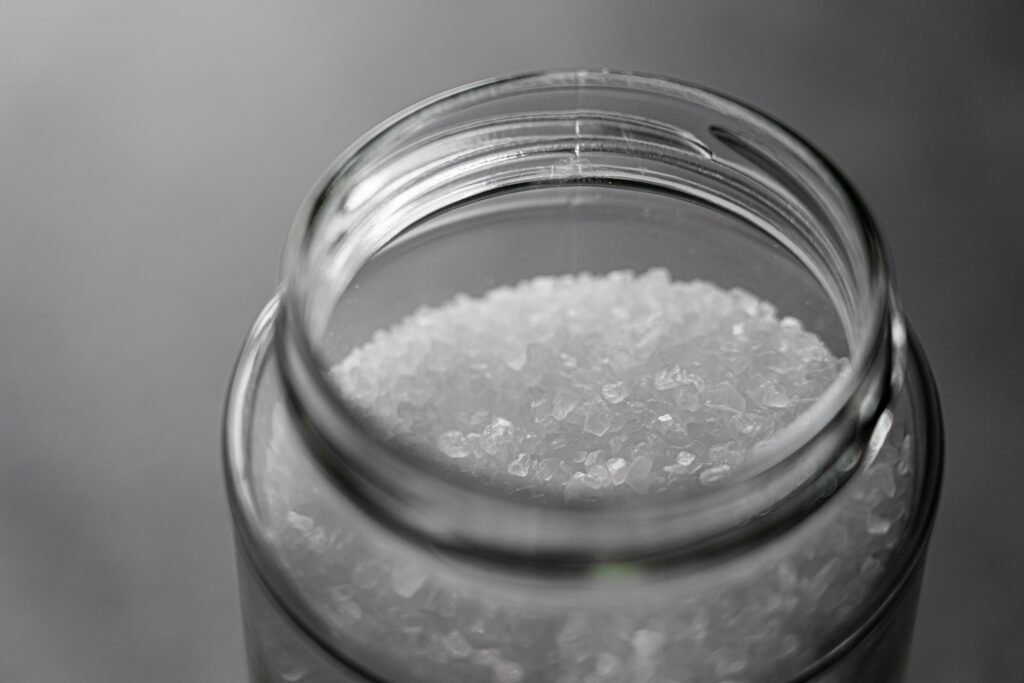
How to Clean a Cast Iron Skillet With Salt
- Cool the Skillet: Allow your cast iron skillet or pan cool down a bit after cooking. It should be warm but not too hot to handle.
- Add Salt: Sprinkle a generous amount of coarse salt into the skillet. Kosher salt is preferred due to its larger grains.
- Scrub the Skillet: Using a sponge, cloth, or paper towel, scrub the surface of the skillet with the salt. The abrasive nature of the salt helps to loosen and lift away food particles and residue. For stubborn bits, you can use a non-metal brush or scraper.
- Discard the Salt: Once you’ve scrubbed the skillet clean, toss out the dirty salt.
- Wipe the Skillet: With a clean, dry cloth or paper towel, wipe any remaining salt and loose debris from the skillet.
- Optional Rinse: If you choose to rinse the skillet, do so with warm water. This step is optional and should be followed by immediate drying to prevent rust.
- Dry Thoroughly: Dry the skillet thoroughly with a towel. For added assurance, you can heat it on the stove for a few minutes to evaporate any residual moisture.
- Re-season if Necessary: If the skillet looks dry or dull after cleaning, apply a light layer of cooking oil, like olive oil, flaxseed oil or any vegetable oil. Simple heat it on medium heat re-season. This helps maintain the non-stick surface.
By following these steps, you can effectively clean your cast iron skillet using salt, maintaining its condition and ensuring its longevity in your kitchen.
How to Re-Seasoning Your Cast Iron Skillet: Easy Steps
- Oil It Up: Once your iron skillet is dry, apply a thin layer of cooking oil or shortening to the entire surface of the pan, inside and out. Use a paper towel to spread it evenly. It’s important to use a very light layer of cooking oil. Wipe away any excess oil with dry paper towel.
- Heat in the Oven: Place your skillet upside down in a preheated 375°F oven. Place a sheet of aluminum foil or an additional baking sheet underneath to catch any drips.
- Bake the Seasoning In: Let the skillet bake for an hour. This process bakes the oil into the iron, forming a protective layer.
- Cool and Store: Turn off the oven and let the skillet cool down completely in the oven. This slow cooling process helps the seasoning to set in.
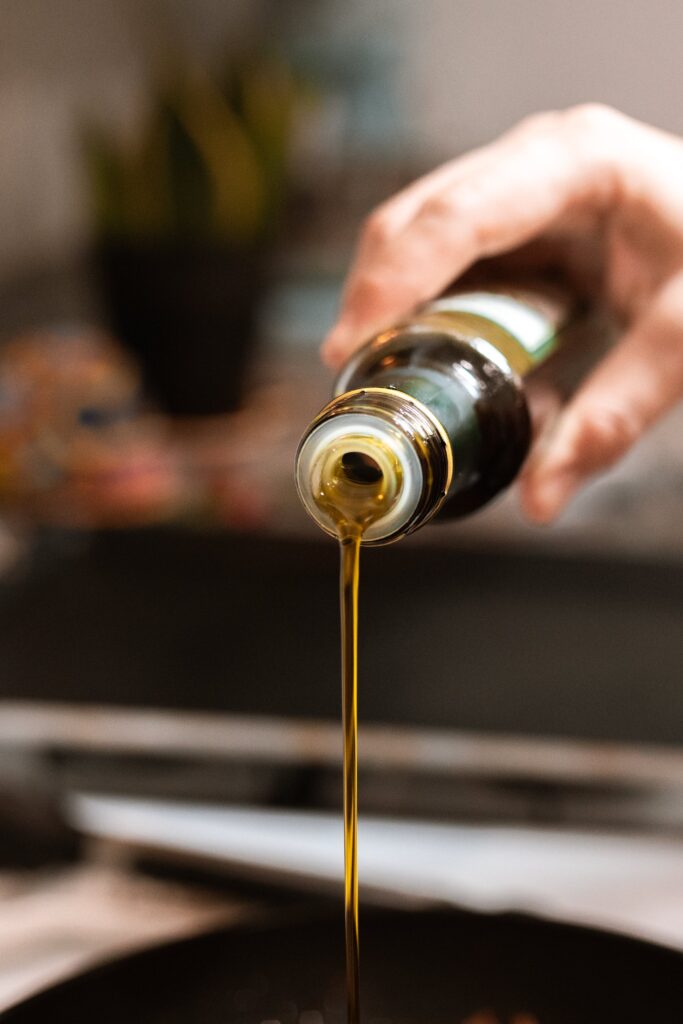
Taking Care of Your Cast Iron Pan
- Avoid Acidic Foods: Cooking highly acidic foods in your cast iron can strip the seasoning. Use a different cookware for your tomato sauces!
- Store Properly: Keep your cast iron in a dry place. If stacking with other pans, place a paper towel between them to protect the seasoned surface.
- Regular Use and Care: Regular use actually improves the season of your cast iron. Each time you cook, you add to the seasoning, so keep cooking!
My Favorite Cast Iron Skillet Recipes
- Baked Cheesy White Bean Tomato Skillet
- Roasted Grape and Chicken Skillet
- Cheesy Baked Gnocchi with Italian Sausage
- Easy Baked Italian Ground Beef Meatballs
- Easy Tomato & Chickpea Bake
- Coconut Milk Braised Chicken in Mustard & Herbs
Cast Iron Cleaning FAQs
Can you use dish soap on cast iron?
Yes, you can use a small amount of dish soap on cast iron. Despite common misconceptions, a mild soap won’t harm the seasoned surface if used sparingly. It’s important, however, to rinse the skillet thoroughly and dry it completely after washing to prevent rust. Regular re-seasoning after washing will also help maintain the skillet’s non-stick properties and overall condition.
Should you put cast iron cookware in the dishwasher
No, you should not put cast iron cookware in the dishwasher. The harsh detergents and high heat can strip away the seasoning, leading to rust and deterioration of the iron. Hand washing and promptly drying your cast iron cookware is the recommended method to maintain its seasoning and longevity.
Final Thoughts
Remember, the beauty of a cast iron skillet is in its ability to evolve and improve with time. With proper care and cleaning, your cast iron will be a beloved fixture in your kitchen for years to come. Happy cooking!

Christopher is a food and lifestyle expert, recipe developer and the content creator behind May Eighty Five. With years of experience in the kitchen, he also shares tips, tricks and how to’s that he has learnt over the years. Every week, he shares quick, simple and mostly healthy recipes along with some home and entertaining tips. You will find flavorful cocktails, delicious appetizers, tasty mains and some indulgent desserts. As a home decor enthusiast, he also likes to share simple DIY projects and simple tips for a beautiful home.




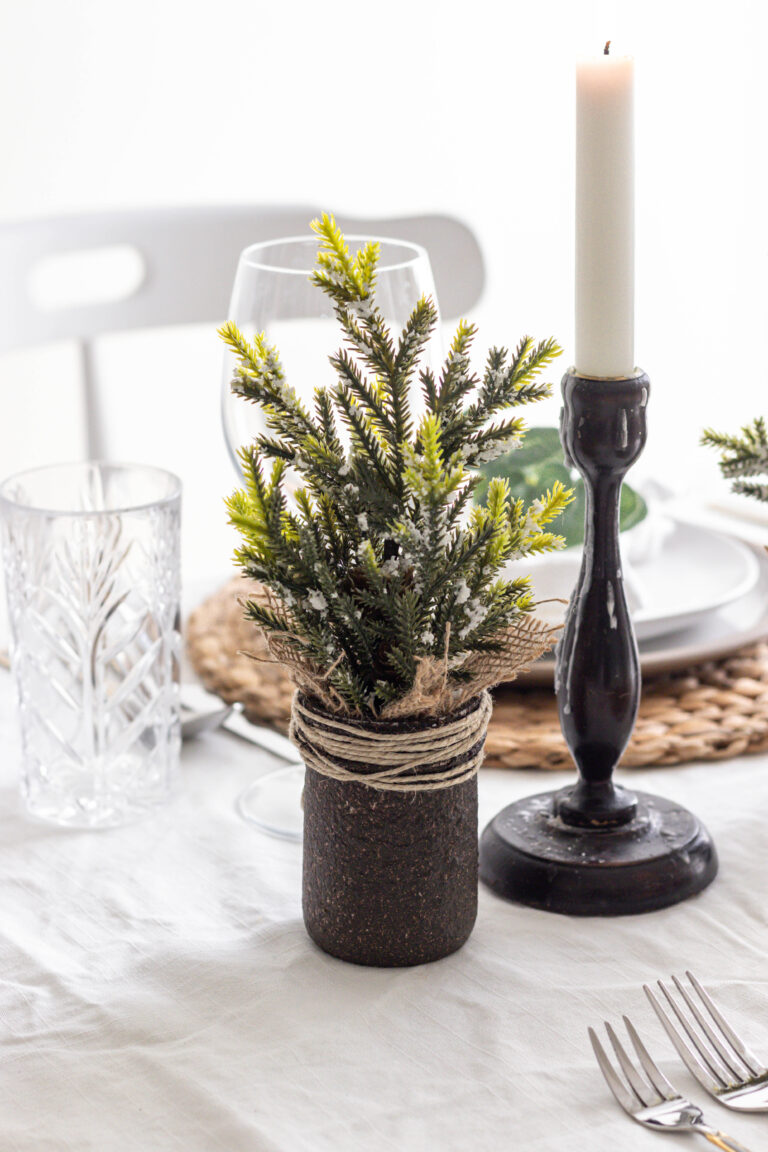



This was very helpful. Thank you for putting this guide together!